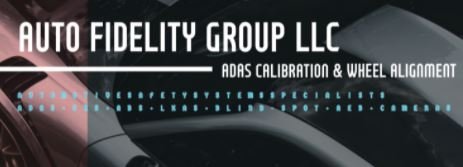Car and Driver
The technical changes most everyone is familiar with have more to do with emissions or performance issues. But, let’s step back a bit and look at the whole thing from the occupant’s vantage point. You know, what changes has the driver had to endure?
When the horse and buggy were still rulers of the open road, cars were just a tinkerers dream. Actually those open roads were more like uneven ditches with wagon wheel ruts, but a road none the less. The first cars had to adapt to those rutted roads and of course, and the driver had take his fair share of bumps and bruises just to prove his new horseless carriage was up to the task.
It wasn’t long before a confrontation between the staunch horse and buggy drivers and the scarf wearing, goggle protected new-fangled automobile occupants came to a cross road. Laws were enacted that a man had to walk at least 50 paces in front of the car holding a raised red flag to warn fellow travelers (mainly the horses) to be aware of this metal contraption belching noxious fumes while sputtering along at the amazing speed of 7 mph. Later, it was the horse and buggies turn to have a red flag warning assistant in front of them as the roles of were reversed. Before long, a horn was mounted to the side of the car creating this obnoxious sound that not only scared the remaining horses but annoyed every passerby as well.
The model T has always been considered the father of the new age of automobiles. But, there were a lot of improvements other than the assembly line that came along around the same time period. Later, enclosed cabs were added into the latest designs with retractable windows and a hard top. Heating systems were incorporated along with other creature comforts. All of these changes made the ride that much more enjoyable, and of course, sold a lot more cars.
Eventually the pedals of the model T were replaced with the standard three pedal design, which made operating the car a bit more “driver-friendly”. Changing gears was made easier with a shift lever instead mashing down the pedal for low and up for high as in the model T. Cold starting a car was still an issue, but instead of getting out of the car and raising the hood, a lever on the dash could be pulled out for cold starts and in when the engine warmed up. The electric “automatic” choke followed years later which meant one less chore the driver had to accomplish.
Hand starting your car was the norm. Even with careful instructions there was still the potential of a few wrench elbows and a couple of broken bones from simply trying to get the car started for that weekend jaunt around the country side. An electric starter was the answer. Now all the driver had to do was mash a pedal on the floor to accomplish the same task.
When the automatic transmission made its debut a person’s strength or ability to shift correctly wasn’t important in operating a vehicle. The car was becoming even more user friendly. The huge steering wheels could now be replaced with a much smaller version incorporated with power steering. Brakes, wipers, suspension, steering, lighting, heating, and air conditioning improvements meant less effort and far less exertion on the driver’s part to control the vehicle while being enclosed in their very own micro climate controlled environment. The car was becoming what some said in the 50’s as ‘futuristic’. True, yes… but Oh, if they only knew what was coming off those assembly lines just a few decades later.
Thoughts changed to emission controls and safety issues during the 60’s and 70’s. Speed limits, bumper heights, seat belts, safety glass, were required from all the manufacturers. Those creature comforts were not forgotten about either. Smoother rides, better tires, and lush interiors were on the minds of every manufacturer. But, it was only the beginning of things to come.
We’ve zoomed through the jet set age, moon landings, and the smog, to come face to face with the electronic age or what some would call the computer age. Cars aren’t wired together with bulky switches, relays, and mechanical linkages anymore, most everything is data signals, sensors and plastic. Not only is the modern car a rolling computer controlling all aspects of the emissions and passenger comfort it is also can be seen, controlled, and monitored by outside sources.
Let’s face it, the days of you holding your hand out of the window to signal or move that seldom used device on the side of the steering column to tell other drivers of your intentions of a right turn may be entirely left up to a computer and not yourself. The car will soon talk to the other cars on the road and they’ll all know what your destination is, and the route you’re taking. All you need to do is tell the car to ‘Go’.
In the near future, the only requirement to “drive” a car is to be able to push ‘enter’. Traffic lights, R&R crossings, and highway congestion can all be controlled by a system of checks and balances. You won’t need to know how to shift the transmission, how to use a road map, decide which wiper speed to use, signal for a turn, judge when the high beams need to be dimmed, or control your traveling speed.
You won’t have to do a thing except to be patient and wait in the comfort of your car while you arrive at your destination safe and sound. When that day comes, you won’t need a steering wheel, pedals, or even a horn. Today’s standard safety features such as air bags, have saved countless lives, but it’s possible that a new and far more advanced crash avoidance system may even make the air bag system as obsolete as the guy with the red flag.
Multiple position seating with heat, massage, and air conditioning, automatic tinted windows, premium sound systems, navigation, active cruise control, parking assist, touch screen commands, voice recognition, and an endless variety of other creature comforts are available. Honestly, some of these creature comforts are far better than what I have at home! But, it’s our car, our transportation, something we spend several hours in and of course, we want it to be just the way we like it.
It’s no wonder you hear that today’s generation can’t drive a stick shift, or how they’ve never heard of “three on the tree”, let alone understand the three pedals on a model T. Those technologies are from a different time, a different era, and are not part of the modern world. In fact, most new cars don’t even have a shifter of any sort. Everything is done by the push of a button. Talk about occupant evolution! What do you think the next generation of drivers are ‘not’ going to need to know that you need to know today?
It’s very possible that an ignition key will only be found in a museum, and I’ll bet they probably won’t understand what a door key was used for. Soon, those automatous cars won’t be something we’ve heard about, but will be the average-everyday car on the road. Now, the only reason to have a guy holding a red flag is to keep the crowd back from the cars on display at the weekend car show.
But, through all the evolutionary changes for the car and driver, one thing has remained a constant. The seldom appreciated, hardly thanked, and least likely to be respected by the hustling-bustling-fast paced money-chasing drivers of these new-fangled contraptions… the person we couldn’t do without… the mechanic. As long as they make some form of transportation, and continually make it more complicated the more we need the educated and highly skilled technician to keep things in tip top shape.
Today’s average driver knows far less about their cars than the previous generation. Although the mechanic needs to know quite a bit more than their predecessors. Before a driver was responsible for nearly every function of the car, but those functions have been passed onto computer signals. The responsibility of keeping those computer signals flowing has fallen onto the mechanic. So, if you like all of your cars bells and whistles, thank a design engineer. If you’d like to keep all those bells and whistles working…thank a mechanic.
There may not be a ‘driver’ for every car in the future, unfortunately, they’ve been evolved out of the picture. But, you can be sure one thing… there will still be a need for a mechanic.











Recommended Comments
Create an account or sign in to comment
You need to be a member in order to leave a comment
Create an account
Sign up for a new account in our community. It's easy!
Register a new accountSign in
Already have an account? Sign in here.
Sign In Now